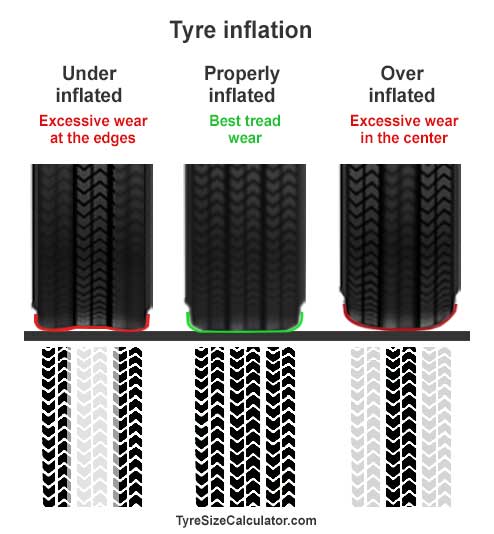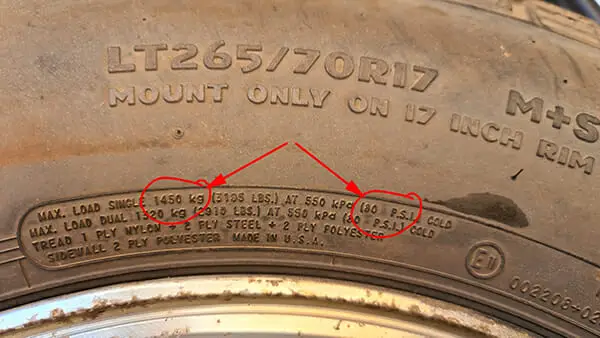How to Calculate Psi for Tires
If you’ve ever wondered how those “psi” numbers on the side of your tires are calculated, wonder no more! Here’s a quick and easy guide to help you calculate psi for your tires. All you need is a few simple tools and some basic math.
- Find the vehicle’s tire psi rating
- This can be found in the owner’s manual or on a sticker inside the driver’s door
- Use a tire pressure gauge to check the air pressure in each tire
- Compare the reading on the tire pressure gauge to the recommended psi for your tires
- If the reading is lower, add air to the tires until they reach the correct psi
- If the reading is higher, release some air from the tires until they reach the correct psi

Credit: www.tyresizecalculator.com
How Do I Know What Psi My Tires Need?
If you’re like most people, you probably don’t think too much about the psi in your tires. But if you’re a car enthusiast or just want to make sure your tires are properly inflated, it’s important to know how to check and fill them. Here’s what you need to know about psi and your tires.
The “psi” in tires stands for pounds per square inch. This is the measurement of how much pressure is in each tire. Your car’s owner’s manual will have the recommended psi for your particular vehicle.
It’s important to keep your tires inflated at the proper level because it can affect gas mileage, handling, and even safety.To check the psi in your tires, you’ll need a tire gauge. These can be purchased at most auto parts stores.
Once you have a gauge, simply remove the cap from one of your tires and press the end of the gauge onto the valve stem. The gauge will give you a reading of the current pressure in that tire.If your tire pressure is low, use an air compressor or hand pump to add more air until it reaches the recommended level.
If it’s too high, let some air out until it reaches the proper level. It’s best to check all four tires regularly so that they all stay properly inflated.
How Do You Calculate Car Psi?
To calculate car psi, you’ll need to know the vehicle’s tire size and wheel diameter. With this information, you can use a tire pressure gauge to measure the amount of air pressure in each tire. The ideal psi for most cars is between 30 and 35.
Is Tire Pressure Based on Tire Size?
Tire pressure is based on the size of the tire, as well as the load that the tire is carrying. The amount of air pressure that a tire can hold varies by manufacturer and model, but generally speaking, a passenger car tire can hold between 30 and 35 PSI.
Determining the correct PSI for new tires and upsized wheels
Tire Pressure Calculator Bicycle
If you’ve ever wondered what tire pressure is best for your bicycle, there’s a quick and easy way to find out- by using a tire pressure calculator. All you need is the width of your tires (in millimeters), and the recommended PSI range for your riding surface. Once you have that information, simply plug it into the calculator and it will give you a starting point for finding the perfect tire pressure.
Of course, every rider is different and will prefer different pressures based on their own preferences. But if you’re not sure where to start, using a tire pressure calculator is a great way to get in the ballpark. And from there, it’s just a matter of fine-tuning until you find what works best for you.
Conclusion
If you want to calculate psi for your tires, there are a few things you need to know. First, find the recommended psi for your specific vehicle and tire size. Once you have that number, use a tire pressure gauge to measure the pressure in each tire.
Finally, divide the total psi by the number of tires on your car. This will give you the average psi for all of your tires.


